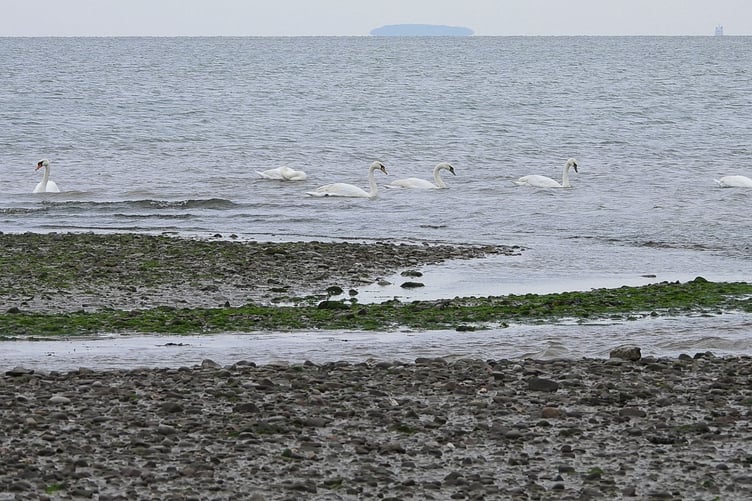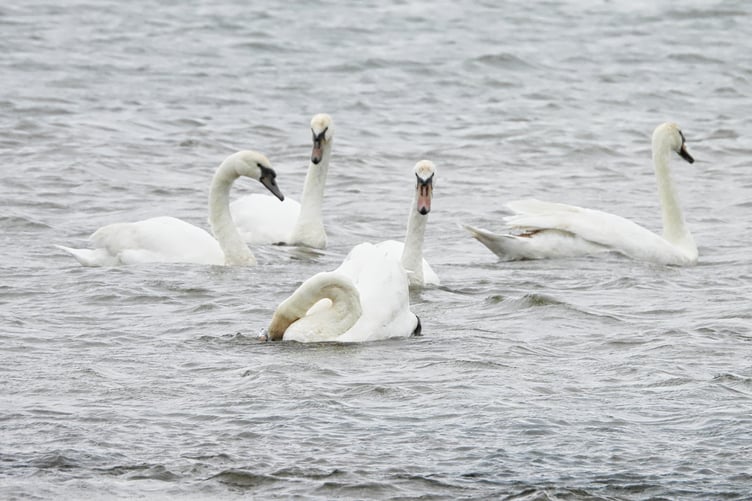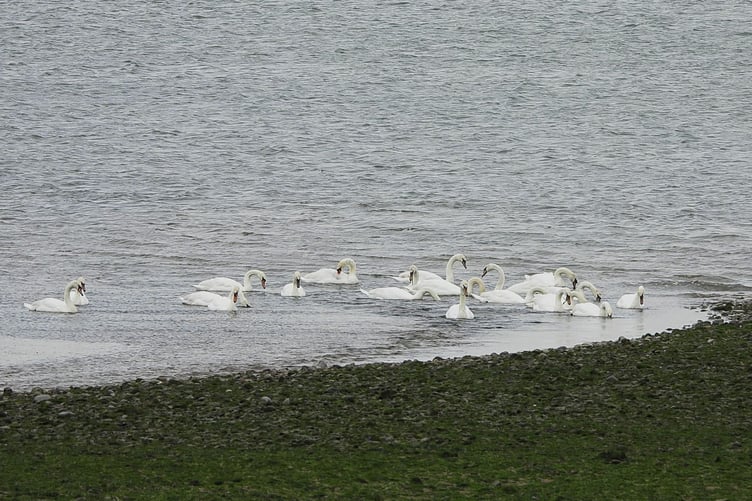A BEVY of swans have been causing a stir off Dunster Beach this week with more than 20 of the birds seen together in the sea.
The spectacle has not been seen in Dunster for many years, although older Free Press readers said it used to be fairly common.

The Dunster swans were photographed by Liz Elmont, who managed to count up to 22 of them.
The mute swans are Britain’s largest and heaviest water bird and do not migrate, although they can move around the country to find winter feeding grounds.

Most commonly seen on inland rivers and lakes, they can be found in the sea in estuaries, coastal brackish lagoons, and sheltered coastal bays.
Large congregations of swans tend to be immature, or older birds seeking a new mate, or too old to breed.
Dunster Beach visitors are being warned swans are protected by law, making it illegal to disturb them.





Comments
This article has no comments yet. Be the first to leave a comment.